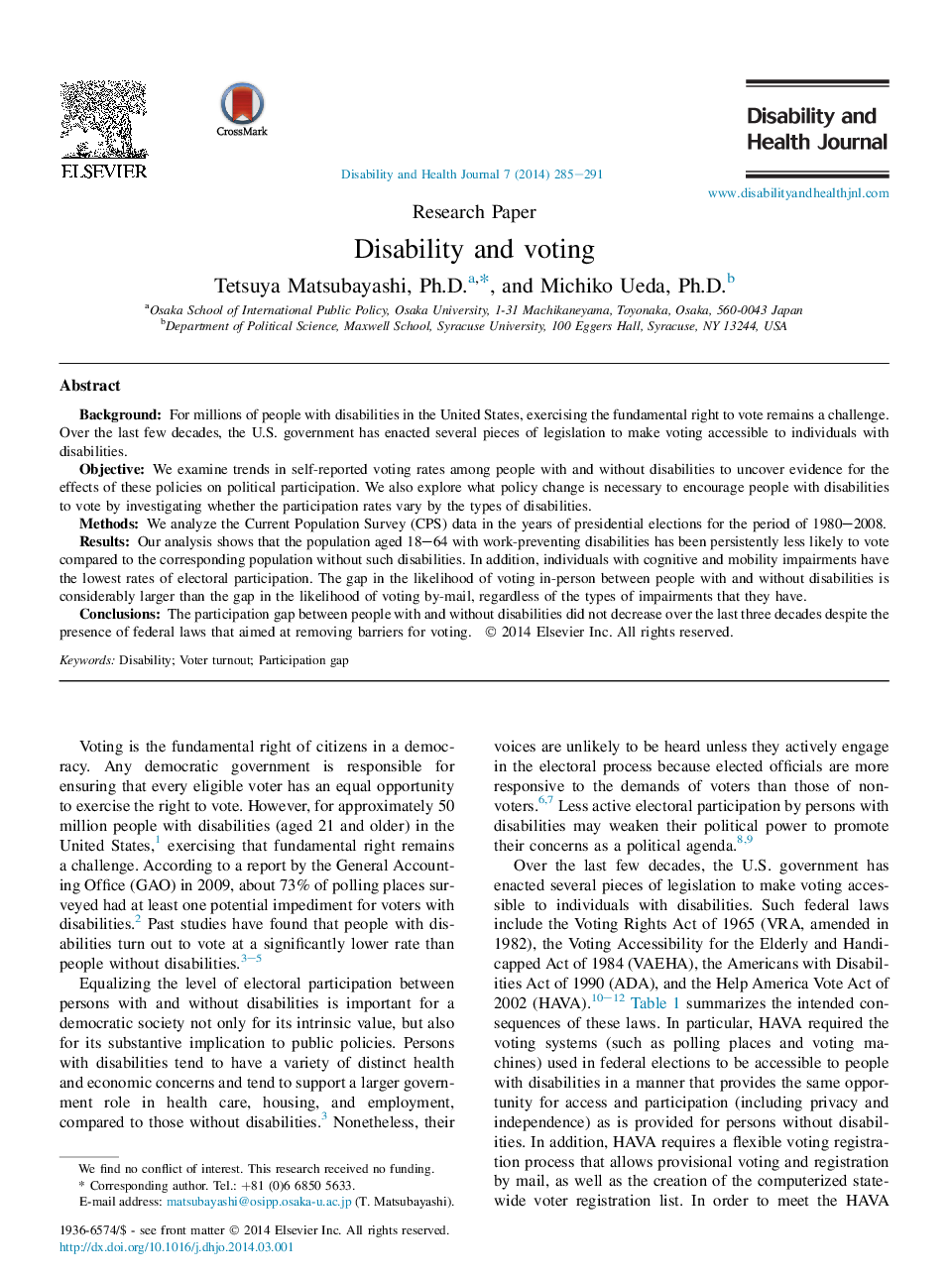| Article ID | Journal | Published Year | Pages | File Type |
|---|---|---|---|---|
| 4197314 | Disability and Health Journal | 2014 | 7 Pages |
BackgroundFor millions of people with disabilities in the United States, exercising the fundamental right to vote remains a challenge. Over the last few decades, the U.S. government has enacted several pieces of legislation to make voting accessible to individuals with disabilities.ObjectiveWe examine trends in self-reported voting rates among people with and without disabilities to uncover evidence for the effects of these policies on political participation. We also explore what policy change is necessary to encourage people with disabilities to vote by investigating whether the participation rates vary by the types of disabilities.MethodsWe analyze the Current Population Survey (CPS) data in the years of presidential elections for the period of 1980–2008.ResultsOur analysis shows that the population aged 18–64 with work-preventing disabilities has been persistently less likely to vote compared to the corresponding population without such disabilities. In addition, individuals with cognitive and mobility impairments have the lowest rates of electoral participation. The gap in the likelihood of voting in-person between people with and without disabilities is considerably larger than the gap in the likelihood of voting by-mail, regardless of the types of impairments that they have.ConclusionsThe participation gap between people with and without disabilities did not decrease over the last three decades despite the presence of federal laws that aimed at removing barriers for voting.
